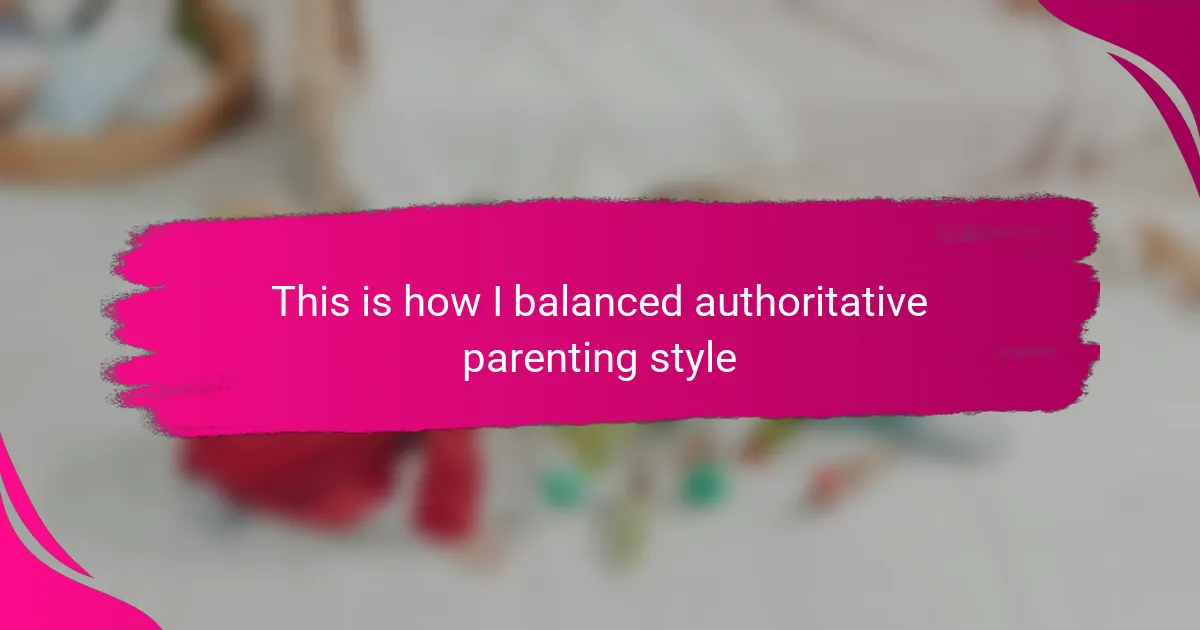Key takeaways
- Authoritative parenting balances clear rules with warmth and open communication, fostering independence and mutual respect between parent and child.
- Maintaining consistency while allowing children to express themselves can be challenging but essential for effective discipline and emotional connection.
- Practical strategies like setting regular “talk time” and explaining the reasoning behind rules can enhance understanding and compliance.
- Monitoring and adjusting parenting approaches based on child feedback helps to fine-tune the balance between authority and empathy, promoting growth for both parent and child.
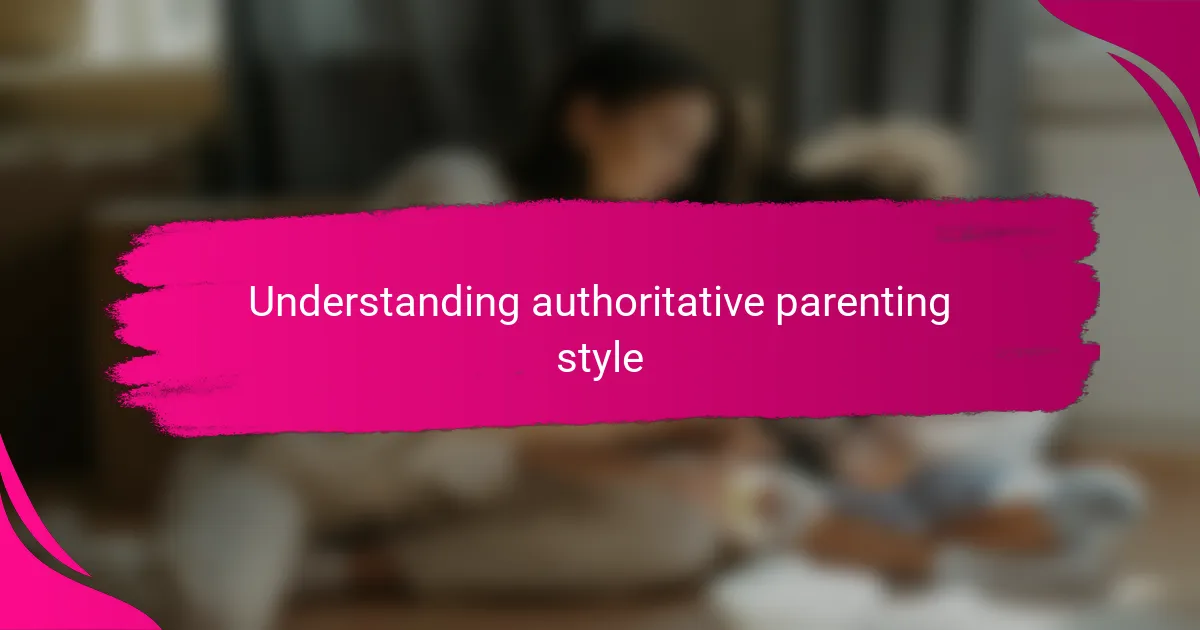
Understanding authoritative parenting style
Authoritative parenting strikes me as a balancing act between setting clear rules and giving warmth and support. I’ve seen firsthand how this style creates an environment where kids feel both guided and understood. Have you noticed how children respond differently when they sense that firmness comes from love, not just control?
What stands out most to me about authoritative parents is their commitment to consistency paired with open communication. It’s about listening to your child’s perspective while maintaining firm boundaries—something I’ve had to learn through trial and error. Doesn’t it make all the difference when children know their opinions matter yet still respect the limits set?
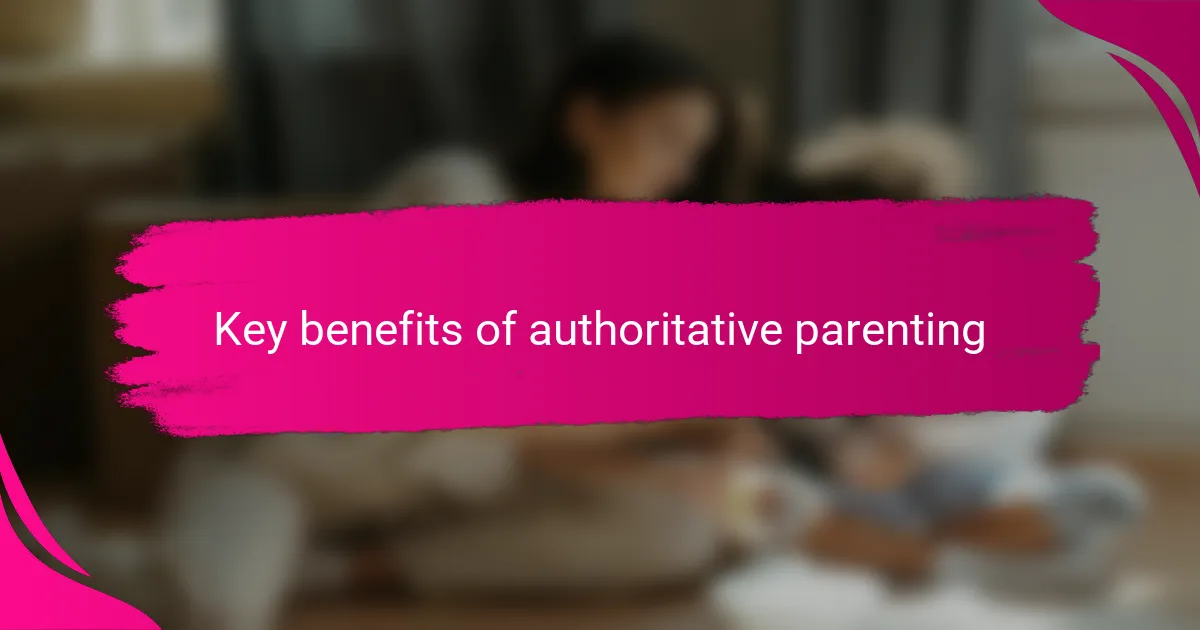
Key benefits of authoritative parenting
One of the benefits I appreciate most about authoritative parenting is how it fosters independence while still providing a safety net. I’ve noticed that when I balance clear expectations with empathy, my child feels confident to make choices but also knows they have my support if things go sideways. Isn’t that kind of security exactly what every child needs to grow?
Another thing I’ve witnessed is the way this style builds mutual respect. When I take time to explain the reasons behind rules, rather than just enforcing them, it opens up a dialogue. This wasn’t always easy for me, but seeing my child respond with understanding rather than rebellion has been incredibly rewarding.
Lastly, authoritative parenting has taught me the value of emotional connection in discipline. Instead of punishing out of frustration, approaching issues with warmth helps maintain our bond. I often reflect on how this approach not only guides behavior but also strengthens our relationship in ways I didn’t expect. Have you tried this shift from control to connection? It changes everything.
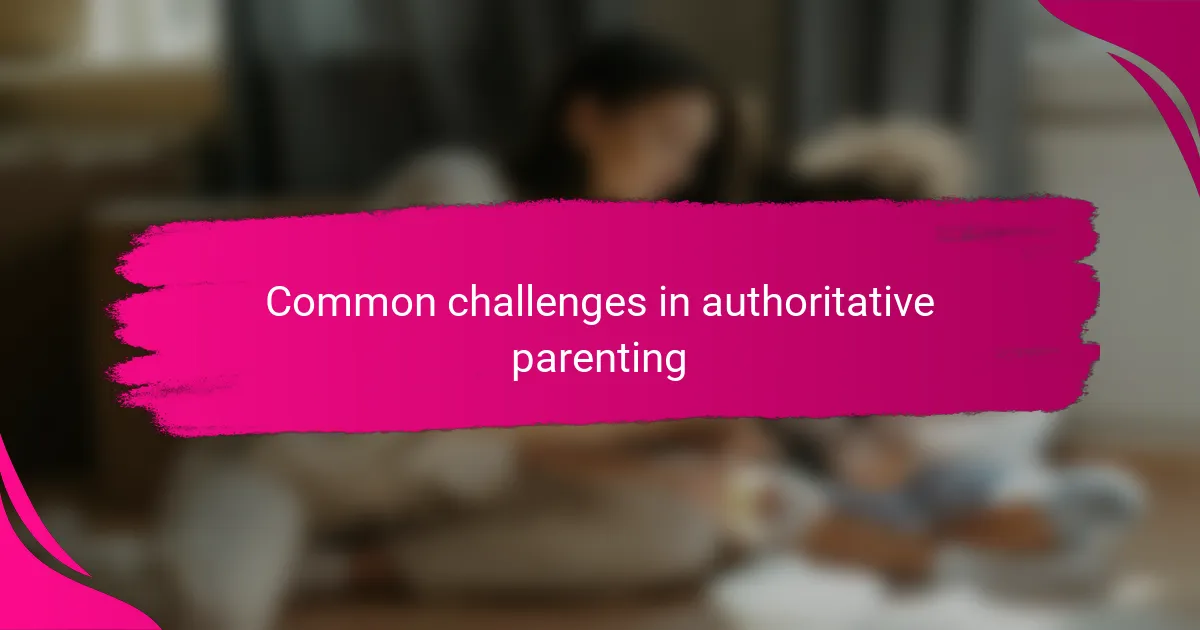
Common challenges in authoritative parenting
One challenge I often faced was maintaining consistency without becoming rigid. It’s tricky because kids test boundaries, and I sometimes found myself wavering between being firm and feeling guilty for being too strict. Have you ever struggled with wanting to enforce rules but also hoping to be their friend?
Another hurdle was balancing open communication with authority. I wanted my child to feel heard, but that sometimes meant lengthy discussions that delayed decisions. I learned that it’s okay to set limits on conversations—children need clear answers as much as they need to express themselves.
Sometimes, the emotional labor of staying patient and warm during tough moments was exhausting. I realized that authoritative parenting isn’t about being perfect; it’s about showing up even when I’m tired or frustrated. Have you noticed how your own emotions can impact your ability to stay present and supportive?
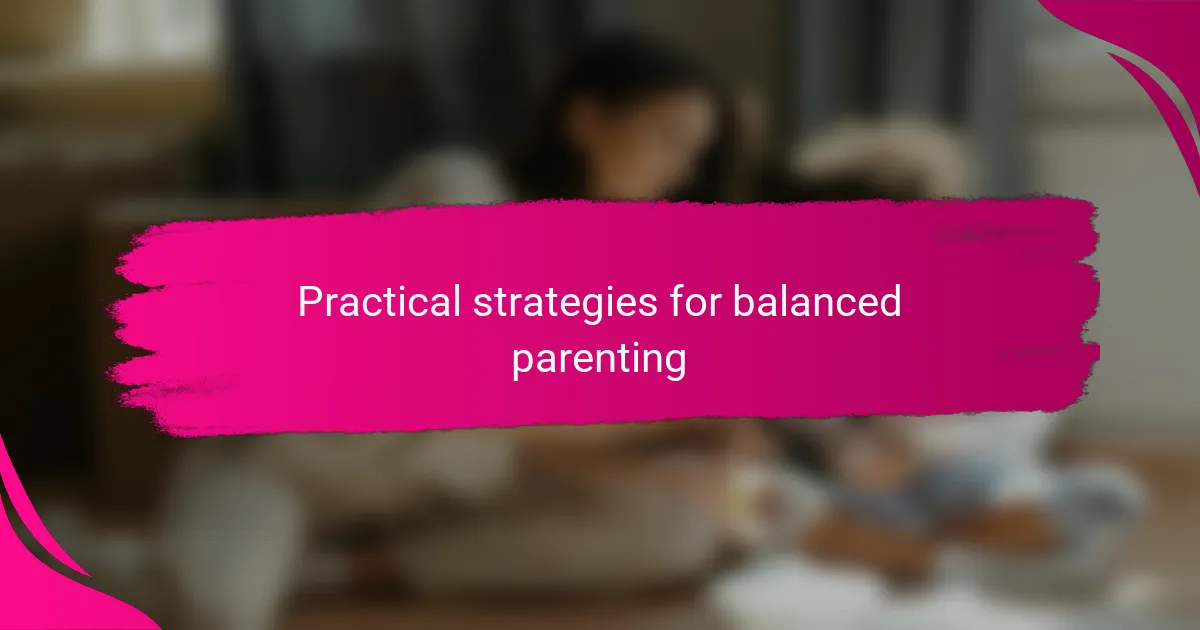
Practical strategies for balanced parenting
Finding practical ways to balance authority and warmth required me to develop rituals that reinforced both. For instance, setting aside daily “talk time” helped me stay connected and listen actively, even when I needed to enforce rules afterward. Have you tried carving out small moments that prioritize connection before diving into discipline?
I also discovered that clear, consistent expectations paired with empathy made a huge difference. When my child understood the “why” behind a rule, it wasn’t just about compliance—it became about respect. I often explained consequences calmly instead of reacting impulsively, which helped keep our conversations constructive rather than confrontational.
Setting boundaries without shutting down dialogue was key, but it didn’t come naturally at first. I learned to say, “Let’s talk more about this later,” when emotions ran high, giving both of us space to cool off. Have you found that timing discussions thoughtfully can transform power struggles into problem-solving moments?
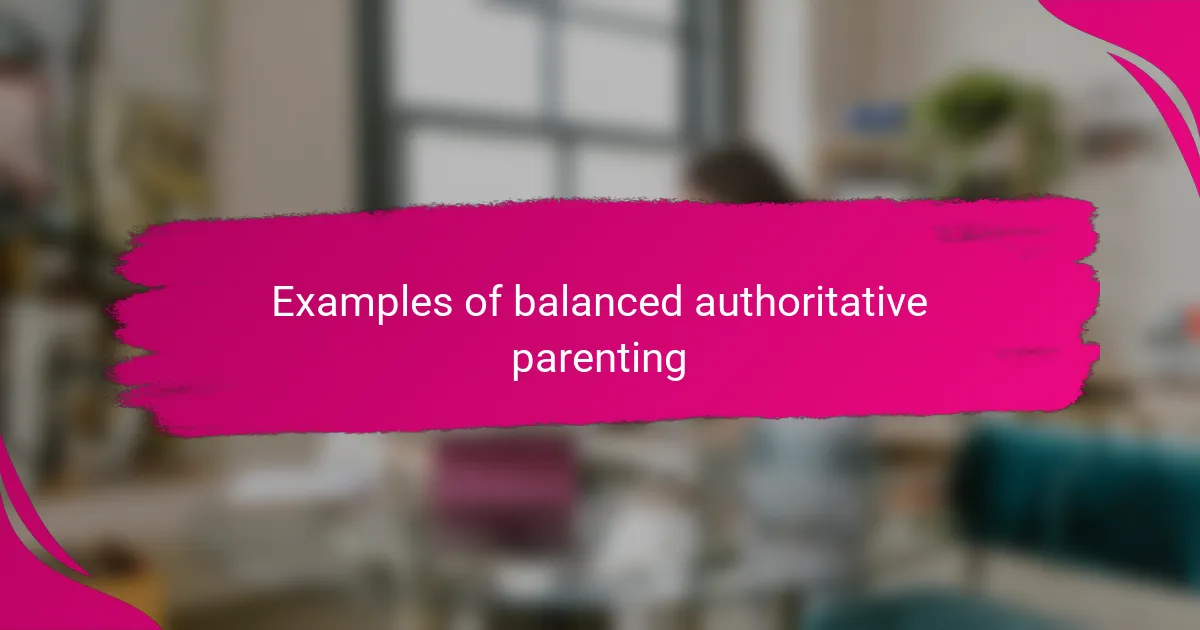
Examples of balanced authoritative parenting
One example that really helped me strike a balance was establishing a “family meeting” routine. We’d gather weekly to discuss upcoming plans and any concerns, which gave my child a real voice while keeping our expectations clear. Have you found that creating a predictable space for dialogue can ease tensions and build trust?
I also remember a moment when my child broke a household rule. Instead of reacting with immediate punishment, I chose to sit down and understand their reasons first. This approach didn’t just diffuse the situation—it turned into a learning opportunity that deepened our respect for each other. Doesn’t addressing missteps calmly often lead to better outcomes than reacting harshly?
Another instance that sticks with me is when I combined firmness with empathy during bedtime struggles. I enforced the bedtime rule consistently but listened to my child’s worries about being alone, reassuring them gently. That balance of authority and warmth made the routine less of a battle and more of a shared understanding. Have you noticed how acknowledging feelings alongside rules can change the whole dynamic?
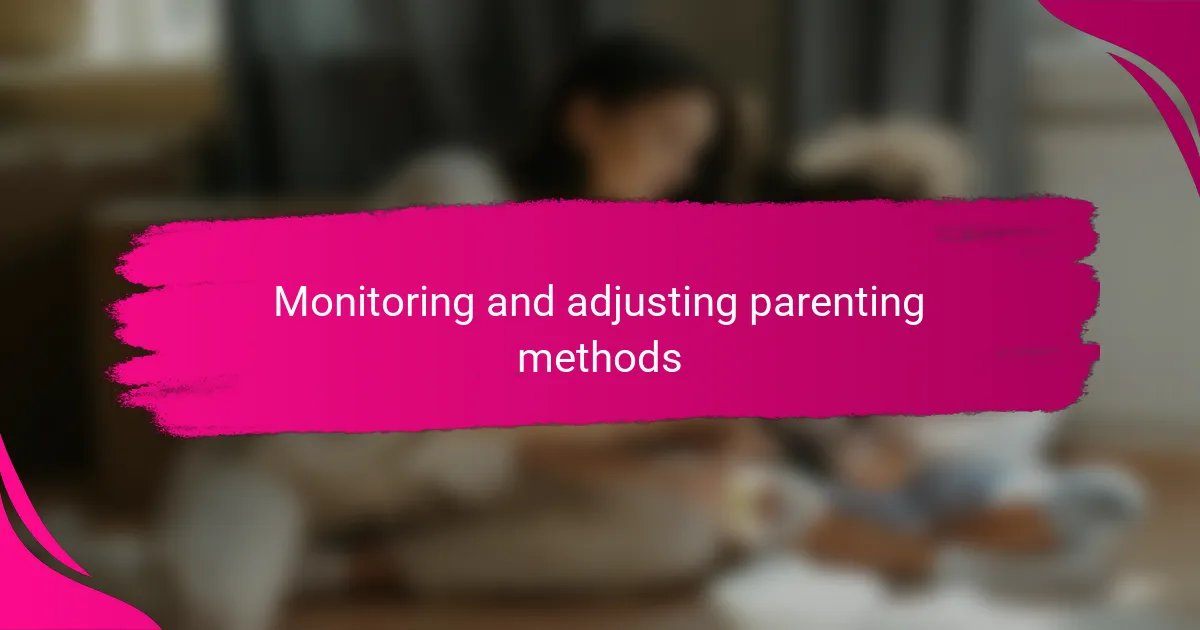
Monitoring and adjusting parenting methods
Keeping a close eye on how my parenting style landed with my child became essential. I’d often ask myself, “Is this approach helping or hindering?” Sometimes, what worked one week didn’t the next, and that’s when I knew I had to tweak my methods.
Adjusting doesn’t mean giving up authority; it’s about fine-tuning the balance. For example, when I noticed my child shut down during lengthy talks, I shifted to shorter, focused conversations. That small change made a big difference in keeping communication open without overwhelming either of us.
I also learned to trust my intuition alongside my child’s feedback. There were moments I felt tempted to stick rigidly to rules, but listening to their perspective helped me adjust in ways that felt respectful and effective. Have you experienced how flexible monitoring can turn challenges into growth opportunities?
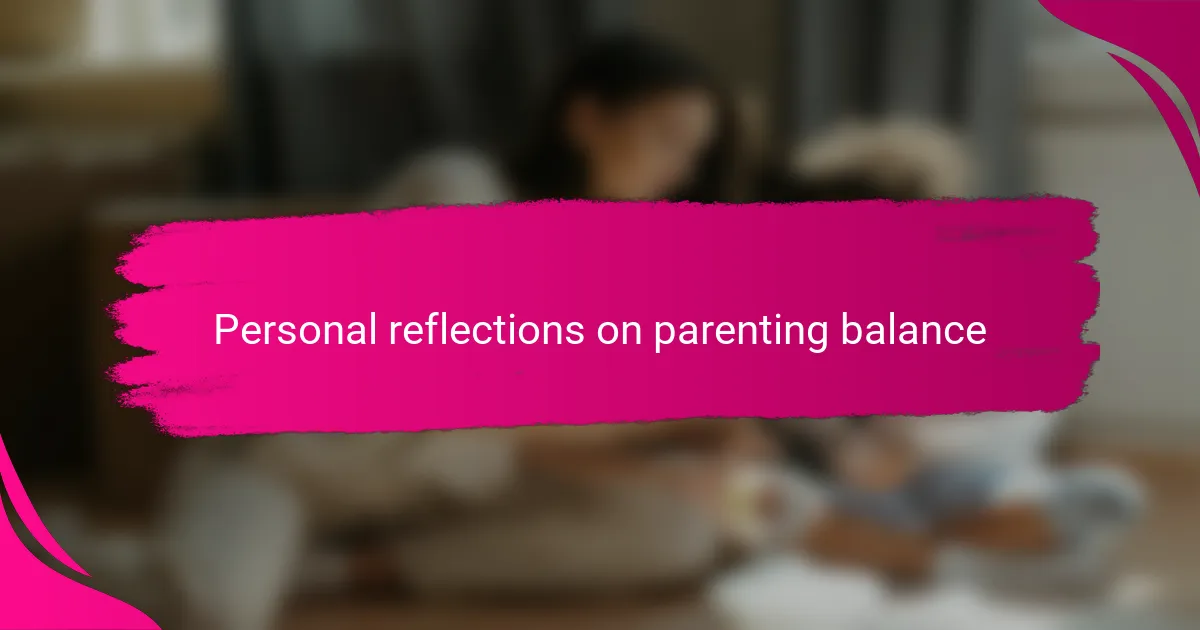
Personal reflections on parenting balance
Balancing authoritative parenting often feels like walking a tightrope, where one misstep can tip the scale. I remember evenings when I questioned whether I was too strict or too lenient—those moments weighed heavily on me. Have you ever felt torn between wanting to guide your child firmly and fearing you might push them away?
Reflecting on this, I realized that balance isn’t about perfection but about intention and responsiveness. When I focused less on being the “perfect parent” and more on understanding my child’s needs in each moment, things naturally fell into place. Isn’t it freeing to accept that parenting is a constant learning process rather than a fixed set of rules?
Sometimes, just pausing to ask myself what my child truly needs in times of tension helped me recalibrate. For instance, offering empathy before enforcing consequences shifted our interactions from power struggles to problem-solving. Have you noticed how a small shift in perspective can transform the whole dynamic in your home?
